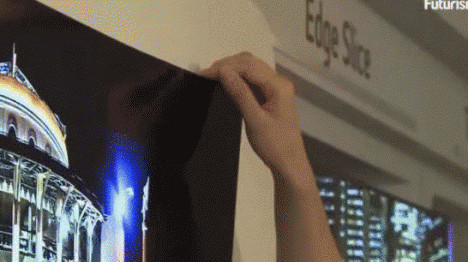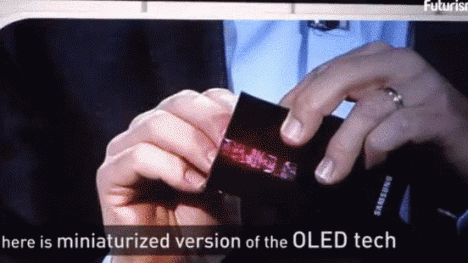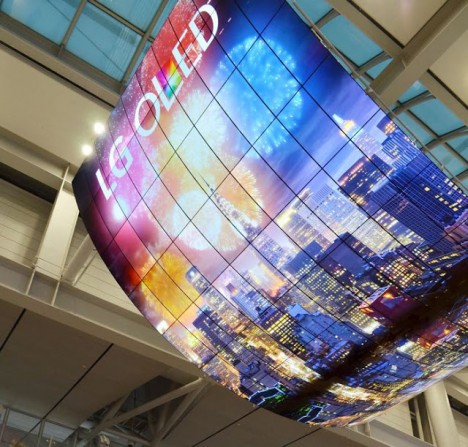
Watch as LG reps curve and bend screens ranging from tiny to huge, sticking TVs to walls with magnets and contorting mobile displays well past what one expects to be their breaking point. The screens use thin-film transistor back planes to individually activate pixels on the screen, adding virtually no thickness to the construction.

Next time you go to a friend’s house to watch a game, consider this: you may soon be able to roll up your big-screen television (or monitor), bring it along and attach it to their wall. The company is also developing batteries that bend – combining the technology could prove incredibly powerful for wearables and other portable devices.

LG also hit the news recently with their release of the world’s largest OLED panel screen (shown above), on display at the airport in Seoul, South Korea – the total display is made up of 140 curved pans, spanning 40 feet high and 25 feet across. According to Park Wan-su, president and CEO at Incheon International Airport, “These OLED displays perfectly complement the advanced technology that our airport has become known for. We are always eager to showcase to the millions of travelers every year the cutting-edge technology that originates from Korea. OLED is a prime example of that.”

